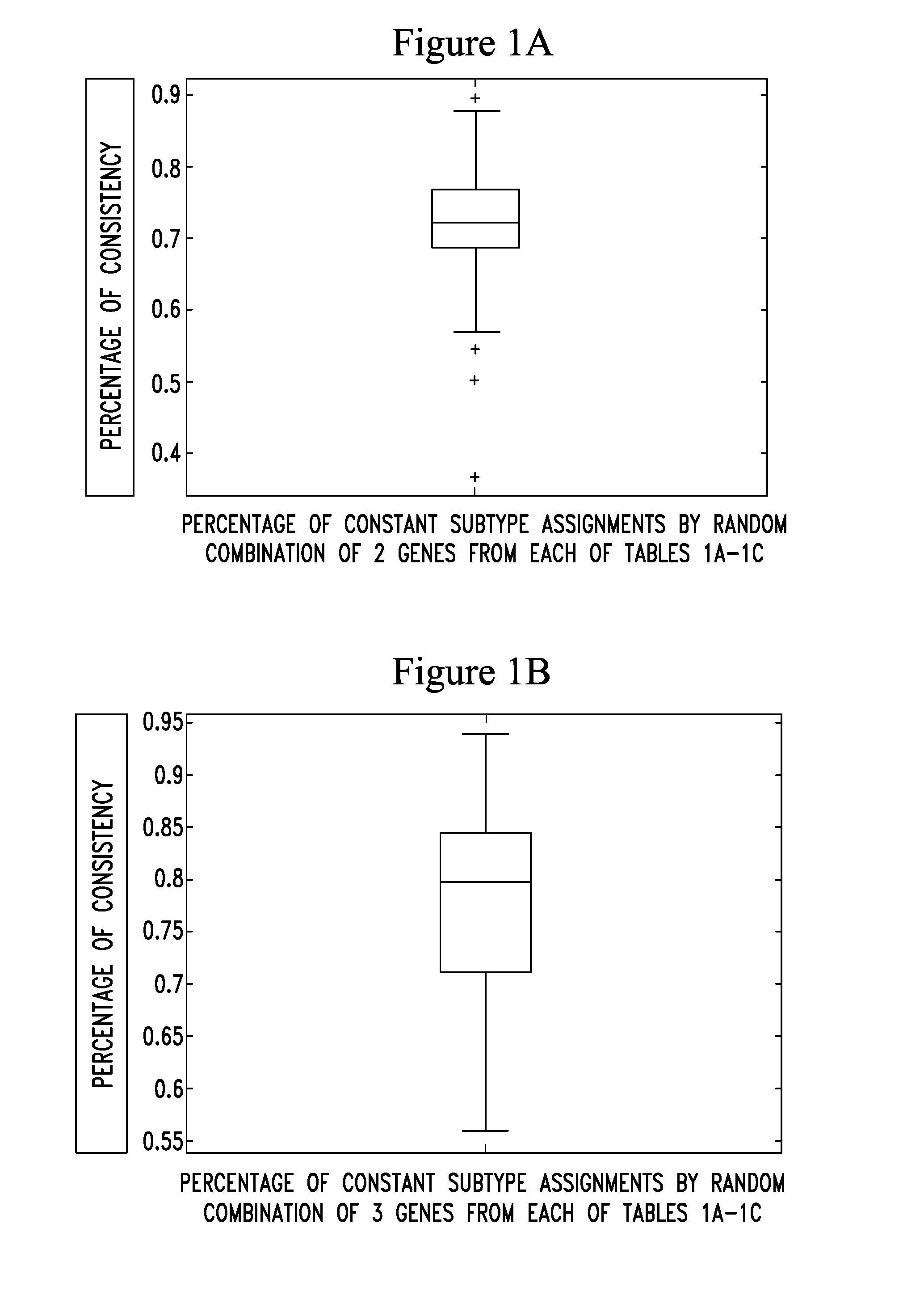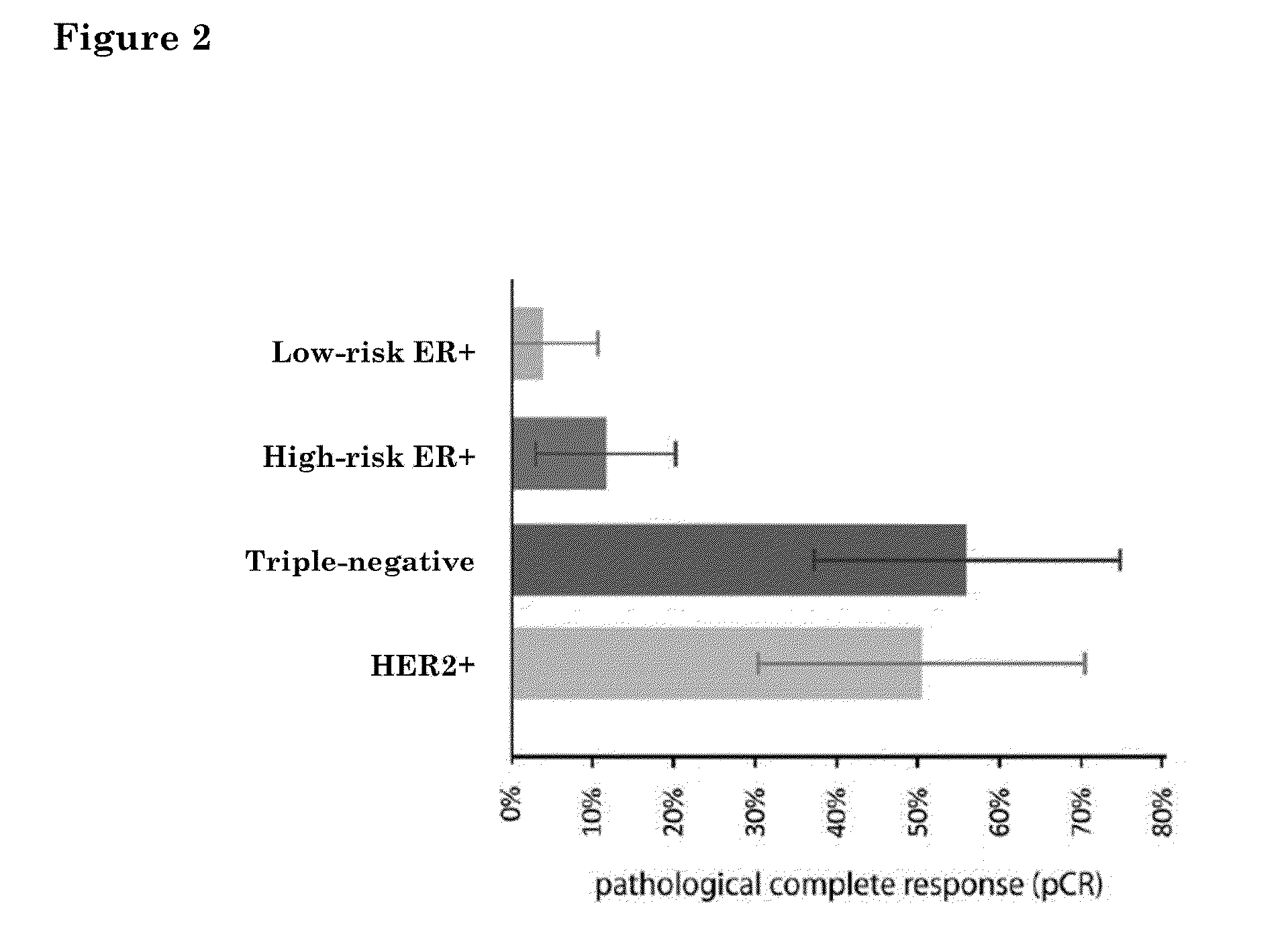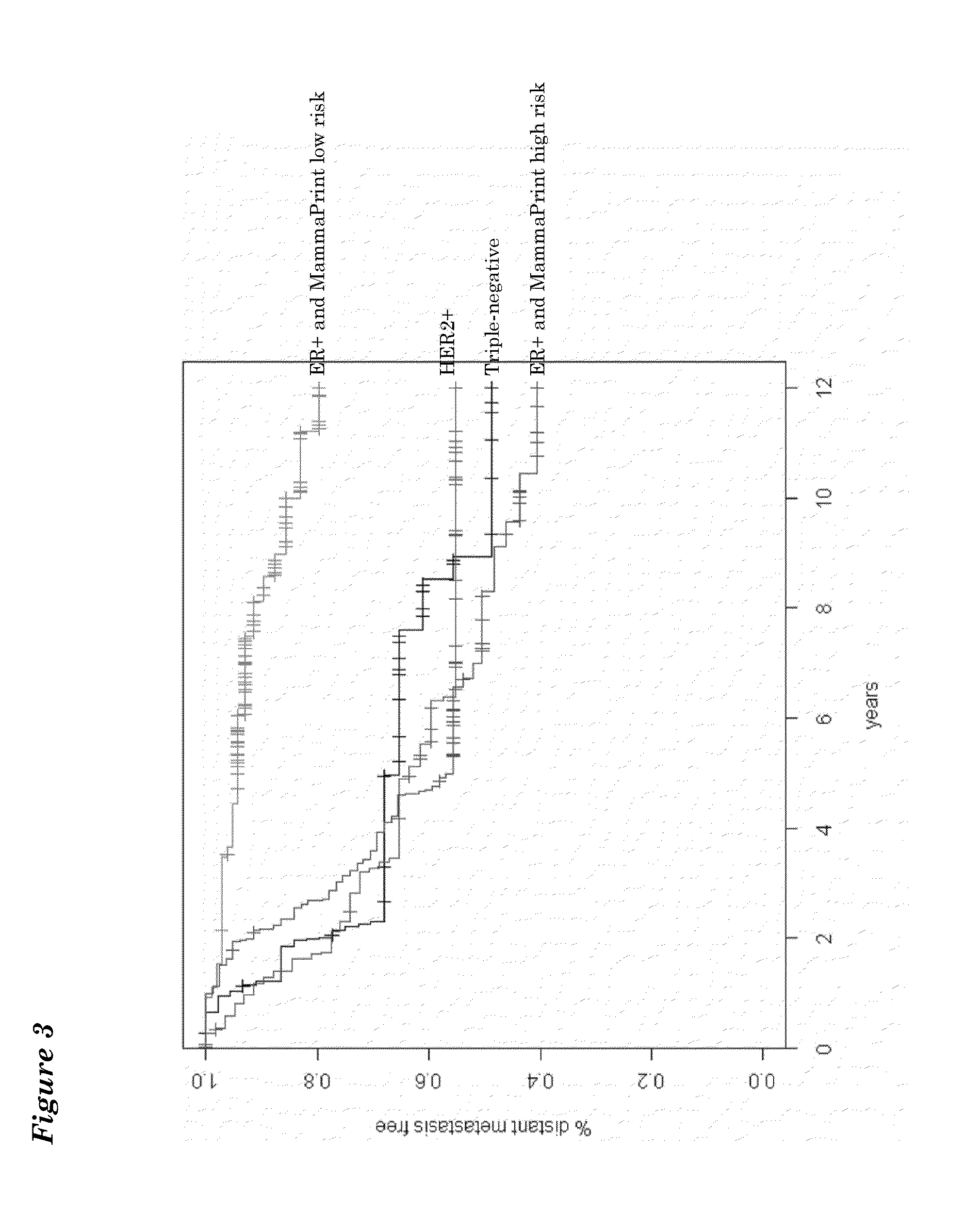Means and methods for molecular classification of breast cancer
a breast cancer and molecular classification technology, applied in the field of oncology, can solve the problem that both methods have an inherent uncertainty in predicting whether
- Summary
- Abstract
- Description
- Claims
- Application Information
AI Technical Summary
Benefits of technology
Problems solved by technology
Method used
Image
Examples
example 1
Material and Methods
Patient Selection
[0063]A total of 1,212 patient specimens from 6 different studies were analyzed (an overview of the different cohorts used in this study can be found in Table 2). Cohort 1, described in van de Vijver et al. [van de Vijver et al. N Engl J Med 2002, 347:1999-2009], was used for the development (cohort 1a) and initial validation (cohort 1b) of the molecular subtyping profile. Cohort 1a samples (n=200) were selected for their concordance between classification based on their ER, PR and HER2 status by immunohistochemistry (IHC) and by TARGETPRINT® microarray based single gene readout (see below). Cohort 1b samples (n=95) had a discordance between IHC and TargetPrint ER, PR or HER2 determination.
[0064]Cohort 2 consisted of 274 early-stage breast cancer samples from a consecutive series of patients seen at the Netherlands Cancer Institute and treated with adjuvant tamoxifen monotherapy [Kok et al. 2010 (submitted)]. Cohort 3 (n=100) was a group of patie...
example 2
[0080]Molecular Subtyping Profile (MSP) can correctly classify subtypes with a minimal number of 2 genes from each subtype gene list: a random combination of 2 genes from the ER+ subtype gene list in Table 1A, a random combination of 2 genes from triple-negative subtype gene list in Table 1B and PERLD1 and SYCP3 from Her2 subtype gene list in Table 1C. A total of 200 random combinations were simulated. For each random combination, the assignments of molecular subtypes are compared with the assignment of molecular subtypes by an 80-genes molecular subtype profile listed in table 3. FIG. 1A shows the classification performances of 200 random combinations. Median consistency of 200 random combinations is 72.2%.
[0081]Molecular Subtyping Profile (MSP) can correctly classify subtypes with a minimal number of 3 genes from each subtype gene list: a random combination of 3 genes from ER+ subtype gene list in Table 1A, a random combination of 3 genes from triple-negative subtype gene list in ...
example 3
[0082]Molecular Subtyping Profile (MSP) can be used to discriminate between triple negative, ER+ and HER2-type breast cancer. An ER+ type breast cancer is likely to have a functional estrogen receptor alpha. Conversely, a triple-negative type tumor would be expected to have a non-functional estrogen receptor alpha. One might therefore expect that breast tumors that are estrogen receptor alpha positive by immunohistochemistry (IHC), but triple negative by MSP-analysis, harbour a defective estrogen receptor.
[0083]To test this idea directly, we searched our patient database for patients that were ERalpha positive by IHC, but triple-negative type by MSP. We identified a patient (60 year old with 9 mm, moderately differentiated, HER2 negative, ER / PR>90% by IHC invasive ductal carcinoma) which had undergone both a MammaPrint®, TargetPrint® and MSP test. She had MammaPrint high risk result. This patient was also ER-positive by TargetPrint, but triple-negative by MSP. This suggested that th...
PUM
 Login to View More
Login to View More Abstract
Description
Claims
Application Information
 Login to View More
Login to View More - R&D
- Intellectual Property
- Life Sciences
- Materials
- Tech Scout
- Unparalleled Data Quality
- Higher Quality Content
- 60% Fewer Hallucinations
Browse by: Latest US Patents, China's latest patents, Technical Efficacy Thesaurus, Application Domain, Technology Topic, Popular Technical Reports.
© 2025 PatSnap. All rights reserved.Legal|Privacy policy|Modern Slavery Act Transparency Statement|Sitemap|About US| Contact US: help@patsnap.com



